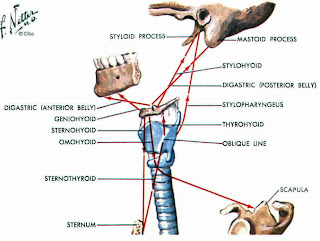
How Does the Singing Voice Work?
The voice is like any musical instrument. It has a power source (breath), a vibrator (vocal folds or internal thyro-arytenoid), and a resonator (the vocal tract). As the breath moves up from the lungs to the trachea, it moves through the vocal folds, which is housed in the larynx. The vocal folds create the sound in the way that blowing breath between two blades of grass creates sound. As the air passes through the vocal folds, which are closing, suction is created at this narrow space, causing the vocal folds to close. Pressure builds up under the closed vocal folds, causing the vocal folds to open again. As the air passes through the narrow passage, it creates suction, which causes the air folds to close again. This cycle continues, vibrating 261 times/second for middle C. This is how your vocal folds vibrate. 

The sound is created at the vocal folds, which are house in the larynx (your larynx is the bony bump on the front of your throat, often called the voice box, or Adams apple). The sound continues up into the vocal tract to the back of the throat, where it resonates, and exits at the mouth. Resonance also occurs in the nose, but only on consonants and sounds, such as the -ing in English words, or nasal French vowels. This is when the velum, or soft palate, moves down and the air passes up further into the nasal area (if you feel the roof of your mouth with your tongue, feel the hard part-- that is your hard palate-- go further where it is soft and there is no more bone-- this is your soft palate).








